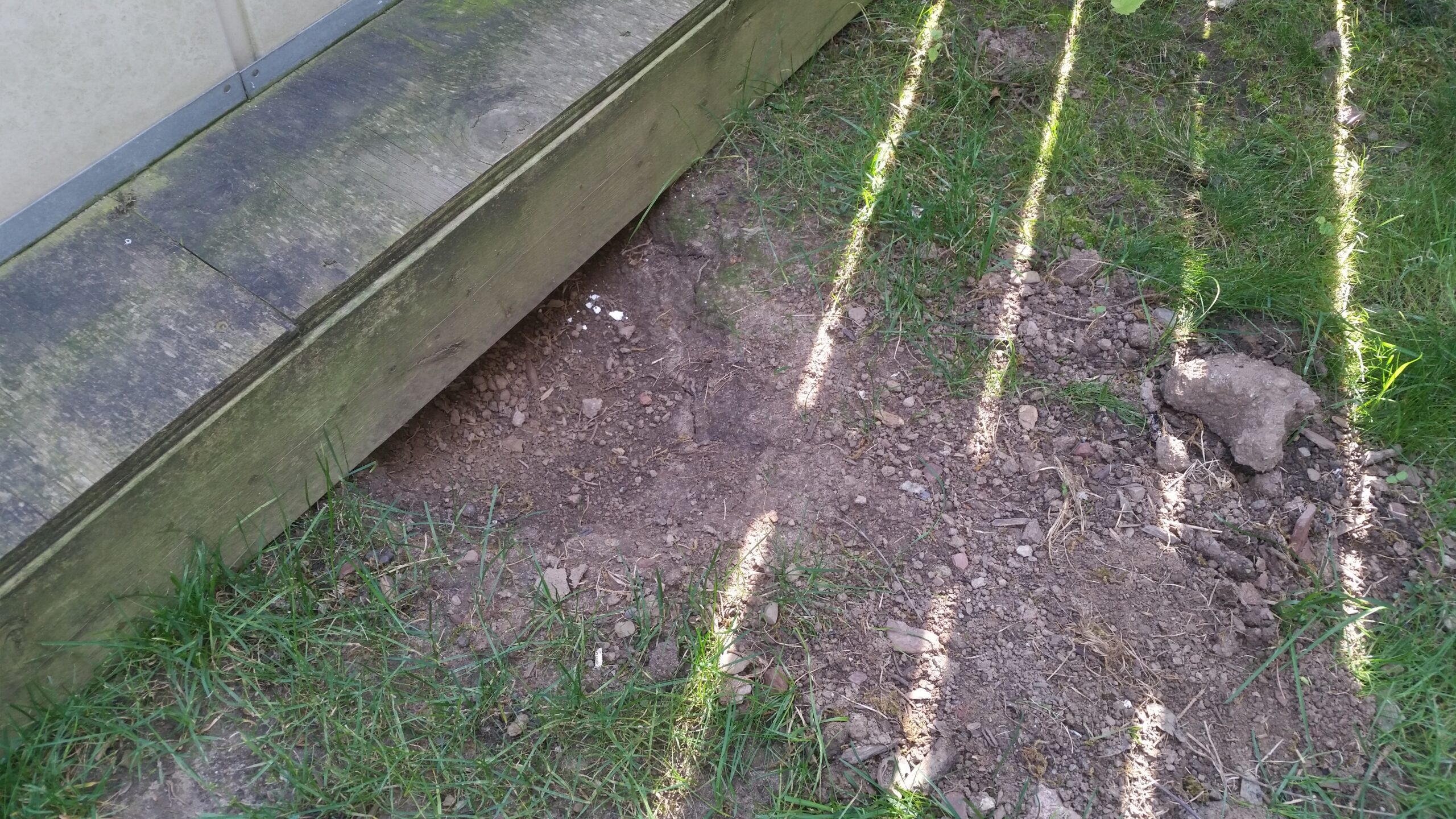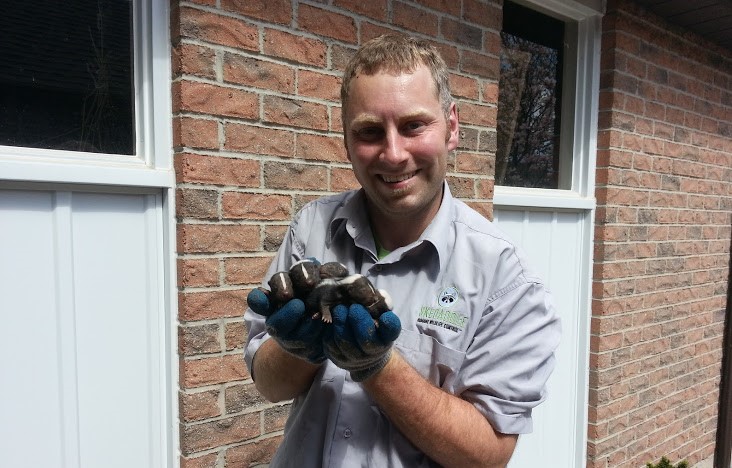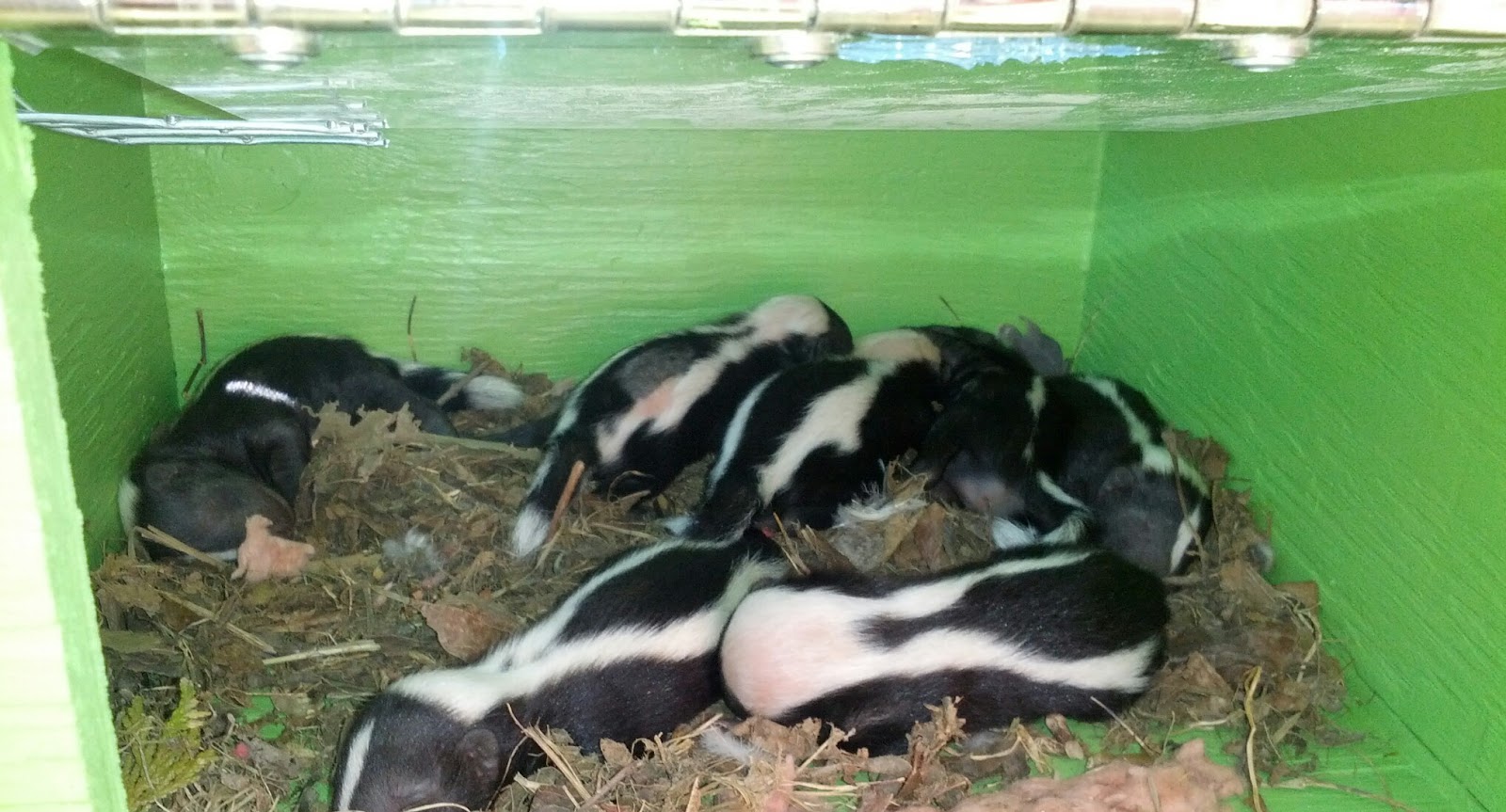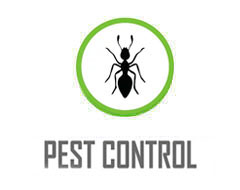Finding skunks under your deck, shed or porch can quickly ruin any time you or your pets spend in the backyard. At Skedaddle we are here to give you your backyard back, and take the worry of skunk spray away. The assessment process for skunk removal begins once our team receives your call or a message through our website. Once we schedule your appointment to assess your property for skunks and the assessment is finished, our technicians will provide you with a complete understanding of the skunk problem at hand and our full, customized solution to remove the animals.
Skedaddle technicians understand the attention to detail needed to properly remove skunks and protect your home. With over 30 years of experience in humane skunk removal, we understand that no two properties are the same and removal techniques need to be tailored to the exact situation for best results. After we’ve had a chance to visit we will provide you with a written quote that details each step of the process.
How We Assess for Skunk Activity
The best way to safely and efficiently remove skunks is to assess their entry points and plan a safe removal. During our initial visit Skedaddle technicians will take the time to understand the exact nature of the problem to ensure a safe and timely removal. It is important that you address skunk issues as soon as possible, in order to limit the amount of damage that is caused on your property. They will thoroughly inspect the exterior of your home to identify skunk entry points and any signs of damage.
Here are some of the things we’ll be evaluating as part of our initial visit:
- Where are the skunks living?
- Where are the entry points the skunks are using?
- Where might skunks gain access to your property in the future?
- What damage have they done?
- Are there any babies present?
Skunk Den Sites
The most common den sites in both urban and rural communities for skunks are under decks, sheds, porches and floating additions. Skunks do not have the ability to climb, so they make their den sites under structures with ground level entry to provide them with: easy access, protection from the elements, and a safe place for mothers to have their babies. They are able to burrow their way below these structures by digging up soil they sit upon.
Our technicians are trained to catch every clue that suggests skunks are living on your property, watching for signs of droppings and fur, while also inspecting the ground for tracks and signs of digging. Skunks can create multiple entry points to access their den site, causing more damage to your property.

All About Skunk Damage & Odor
Skunks can dig up hundreds of pounds of soil per day, and they use this ability to burrow under your property. The horrible spray from skunks is one of the biggest risks of having them on your property. Skunk spray lingers for weeks at a time, and can often spread from below a deck or porch and into your home. DIY skunk removal can often lead to skunks spraying in defense of their den. Our technicians are trained to expertly remove skunks and limit the possibility of them spraying. Skunks also love to use your backyard as a feeding ground as they dig for grubs, and can leave your lawn littered with little holes that may require extensive law repair.

Our Humane Removal Process for Skunks
After a proper evaluation of your property and home has been completed, our technicians will use a hands-on approach to remove the skunks from their den site. We do not set a trap and cross our fingers. Our humane approach involves gaining access to the den site and physically removing the skunks and their babies. When access is not possible or practical our technicians will install a one-way door over the skunk’s entry point that allows them to leave for food and water, while preventing their ability to re-enter.
As soon as the skunks have left, our technicians begin the prevention process by installing a galvanized-steel screen barrier into the soil and around the perimeter of your deck or shed. Installing preventive measures is the only way to provide a long-term solution after removal, otherwise the skunks can easily return or their odor may attract other wildlife to their den site. Even the strongest skunk is not able to dig through our screening, and will be forced to move on to one of their other den sites. Every skunk keeps multiple sites within a community, meaning once our technicians have removed them, they will have plenty of other places to go for warmth and safety.

How We Humanely Remove Baby Skunks
One of the many reasons that we do not use traps to remove skunks is to avoid separating mothers from their babies. Skunk babies begin to arrive in May and into June. During this time our technicians pay close attention to the signs of babies, and prepare for the possibility of their removal.
Once babies arrive, the removal process becomes more difficult, with mother skunks typically giving birth to 4-6 babies. Skunk babies are born with their eyes closed and will not survive without their mother’s care. They are not capable of leaving their den site for up to 6 weeks after birth, and even then require their mother’s assistance to learn how to navigate the world.
Skedaddle technicians take on the challenge of removing baby skunks from the den site by hand, and place them in a heated, sheltered baby reunion box. This box protects the babies until their mother is able to safely relocate them to one of her alternate den sites in the community.








FOLLOW US